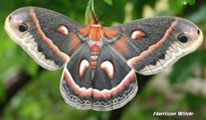Native Plants
Search for native plants by scientific name, common name or family. If you are not sure what you are looking for, try the Combination Search or our Recommended Species lists.
Acer saccharinum
Acer saccharinum L.
Silver Maple, Soft Maple, White Maple
Aceraceae (Maple Family)
Synonym(s): Acer dasycarpum, Acer saccharinum var. laciniatum, Acer saccharinum var. wieri, Argentacer saccharinum
USDA Symbol: ACSA2
USDA Native Status: L48 (N), CAN (N)
Large tree with short, stout trunk, few large forks, spreading, open, irregular crown of long, curving branches, and graceful cut-leaves. A large canopy tree, 75-100 ft. tall, silver maple’s massive, ascending limbs form a graceful, oval or rounded crown. Plump, red flower buds are visible in winter and the first to bloom in spring. Deeply-cut, deciduous leaves are silvery underneath. Fall color ranges from yellow-brown to yellow tinged with bright red.
Its rapid growth makes Silver Maple a popular shade tree; however, its form is not generally pleasing, its brittle branches are easily broken in windstorms, and the abundant fruit produces litter. Sugar can be obtained from the sweetish sap, but yield is low. Landscape value should be tempered as it becomes a liability with age. Silver maple sap is only half as sweet as that of sugar maple (Acer saccharum), but with patient boiling it yields a delicious pale syrup.
Plant Characteristics
Duration: PerennialHabit: Tree
Leaf Retention: Deciduous
Fruit Type: Samara
Size Notes: Up to about 100 feet tall.
Leaf: Green
Autumn Foliage: yes
Fruit: Green, Brown
Bloom Information
Bloom Color: White , Red , YellowBloom Time: Mar , Apr
Distribution
USA: AL , AR , CT , DC , DE , FL , GA , IA , IL , IN , KS , KY , LA , MA , MD , ME , MI , MN , MO , MS , NC , ND , NE , NH , NJ , NY , OH , OK , PA , RI , SC , SD , TN , VA , VT , WI , WVCanada: NB , NS , ON , QC
Native Distribution: N.B. to e. Ont. & MN, s. to n.w. FL, e. OK & e. NE
Native Habitat: Rich bottomlands; moist hillsides; river banks
Growing Conditions
Water Use: MediumLight Requirement: Sun , Part Shade , Shade
Soil Moisture: Moist
CaCO3 Tolerance: Medium
Drought Tolerance: High
Soil Description: Rich, wet to moist, slightly acid soils.
Benefit
Warning: Will cause sidewalks to buckle and drain tiles to clog. Should be considered in areas of poor soils where few other species will survive.Conspicuous Flowers: yes
Attracts: Birds
Butterflies and Moths of North America (BAMONA)
|
Cecropia silkmoth (Hyalophora cecropia)  Adult Food Source |
Propagation
Description: Seed has no dormancy and germinates immediately after maturing. Treated softwood cuttings root readily.Seed Collection: The winged fruit of maples is called a samara. Seed is usually not extracted from the samara.
Seed Treatment: For maximum germination, most maple species require a period of warm-moist stratification followed by cool stratification.
Commercially Avail: yes
Find Seed or Plants
View propagation protocol from Native Plants Network.
National Wetland Indicator Status
| Region: | AGCP | AK | AW | CB | EMP | GP | HI | MW | NCNE | WMVE |
| Status: | FAC | FAC | FACW | FAC | FACW | FACW | FAC |
From the National Organizations Directory
According to the species list provided by Affiliate Organizations, this plant is on display at the following locations:Natural Biodiversity - Johnstown, PA
Mt. Cuba Center - Hockessin, DE
Bibliography
Bibref 1186 - Field Guide to Moths of Eastern North America (2005) Covell, C.V., Jr.Bibref 1185 - Field Guide to Western Butterflies (Peterson Field Guides) (1999) Opler, P.A. and A.B. Wright
Search More Titles in Bibliography
Additional resources
USDA: Find Acer saccharinum in USDA PlantsFNA: Find Acer saccharinum in the Flora of North America (if available)
Google: Search Google for Acer saccharinum
Metadata
Record Modified: 2013-06-27Research By: TWC Staff